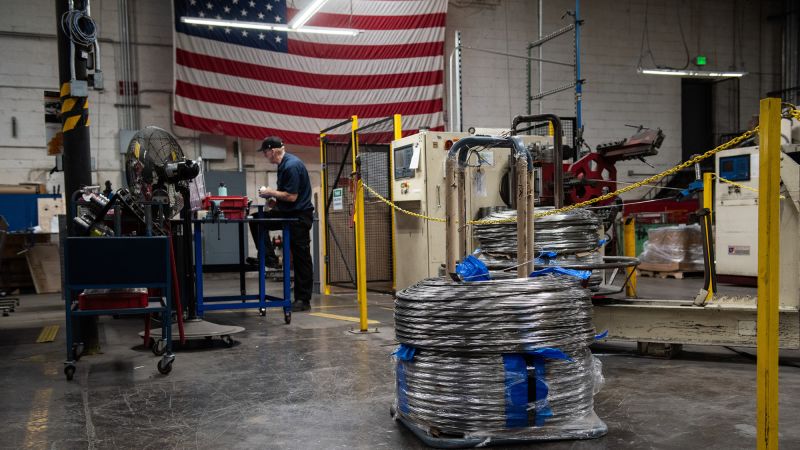The American manufacturing industry has experienced challenges over the past two years due to supply chain disruptions and high interest rates. However, the industry expanded in March for the first time in 16 months, signaling positive growth. This resurgence may complicate the Federal Reserve’s inflation fight, potentially delaying interest rate cuts or resulting in fewer cuts this year. Despite the increase in interest rates, the industry showed signs of growth with the Institute for Supply Management’s purchasing managers index rising above 50 for the first time since September 2022.
President Joe Biden’s signing of major spending packages, such as the bipartisan infrastructure bill and the CHIPS and Science Act, has allowed manufacturers to invest in new factories to increase production capacity. However, Fed officials remain cautious and have indicated that they will remain patient with interest rates as they monitor economic trends and inflation levels. While consumer prices have increased, the Fed is waiting for more evidence before making any significant changes to interest rates.
The stock market reacted negatively to economic data showing persistent price pressures and strong consumer spending. However, the economy added more jobs than expected in March, leading Fed Chair Jerome Powell to emphasize that there is no rush to cut rates. Some Fed officials, including Minneapolis Fed President Neel Kashkari, have suggested that rate cuts may not be necessary if inflation remains stable. The manufacturing data from ISM has further supported the notion that the economy is robust and the Fed should maintain its current stance on interest rates.
Despite the positive signs of growth in the manufacturing industry, Wall Street remains cautious about the potential impact on interest rates. Some manufacturers are optimistic about future business prospects, reporting increased activity and expectations for growth in the coming quarters. Overall, the economy’s continuing strength poses challenges for the Fed in deciding on future interest rate adjustments and monetary policy measures.
Amazon’s reconsideration of its cashier-less technology at its grocery stores highlights the challenges of implementing such innovations in the retail sector. The company is replacing its “Just Walk Out” technology with Dash Cart, which allows customers to scan groceries and check out their purchases. Customer reluctance to adopt cashier-less technology in grocery stores has led Amazon to pivot its strategy and focus on more seamless checkout experiences in smaller stores. Despite these challenges, Amazon plans to continue using the technology in other formats and locations where it has been more successful.
The upcoming week will see a range of significant events, including earnings reports from major companies like Delta Air Lines, Rent the Runway, and JPMorgan Chase. Additionally, economic data releases on the Consumer Price Index, Producer Price Index, and jobless benefits applications will provide insights into the state of the economy. Central banks in the US, Canada, and Europe will announce their interest rate decisions, while China will report inflation and trade data. These events will be closely monitored by investors and economists for signals about the future direction of the global economy.


